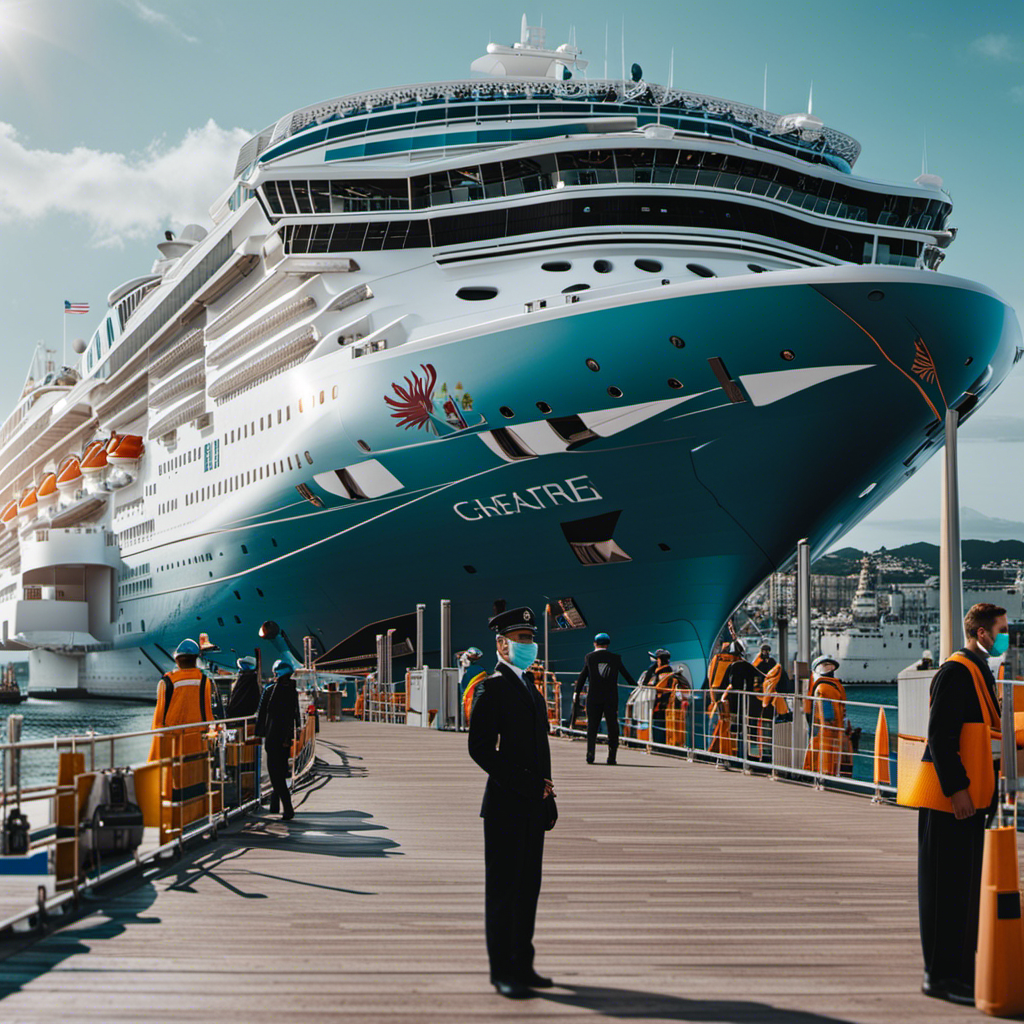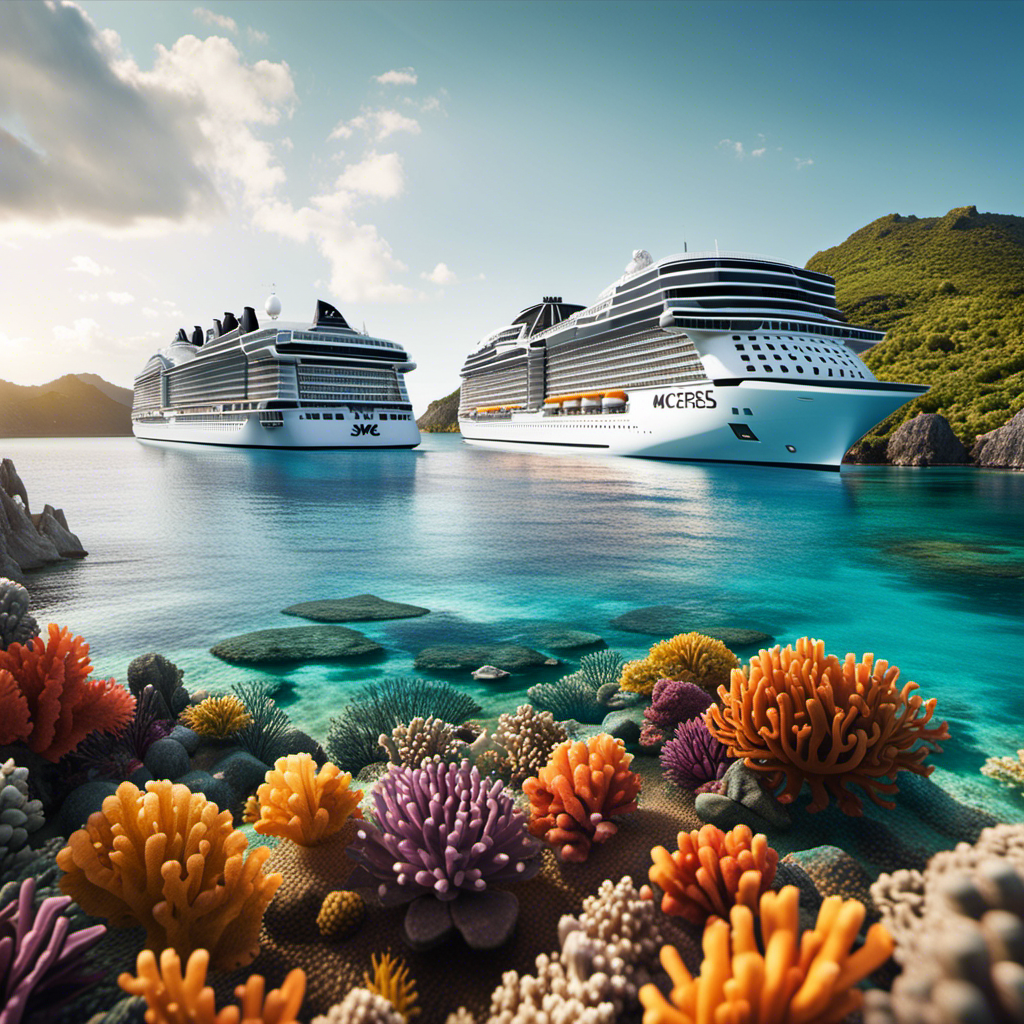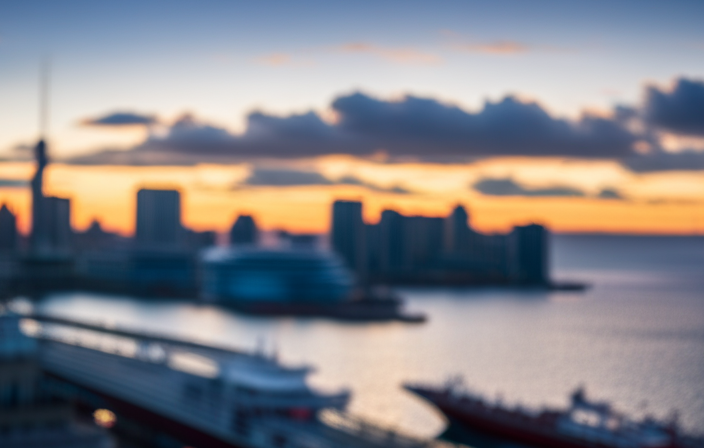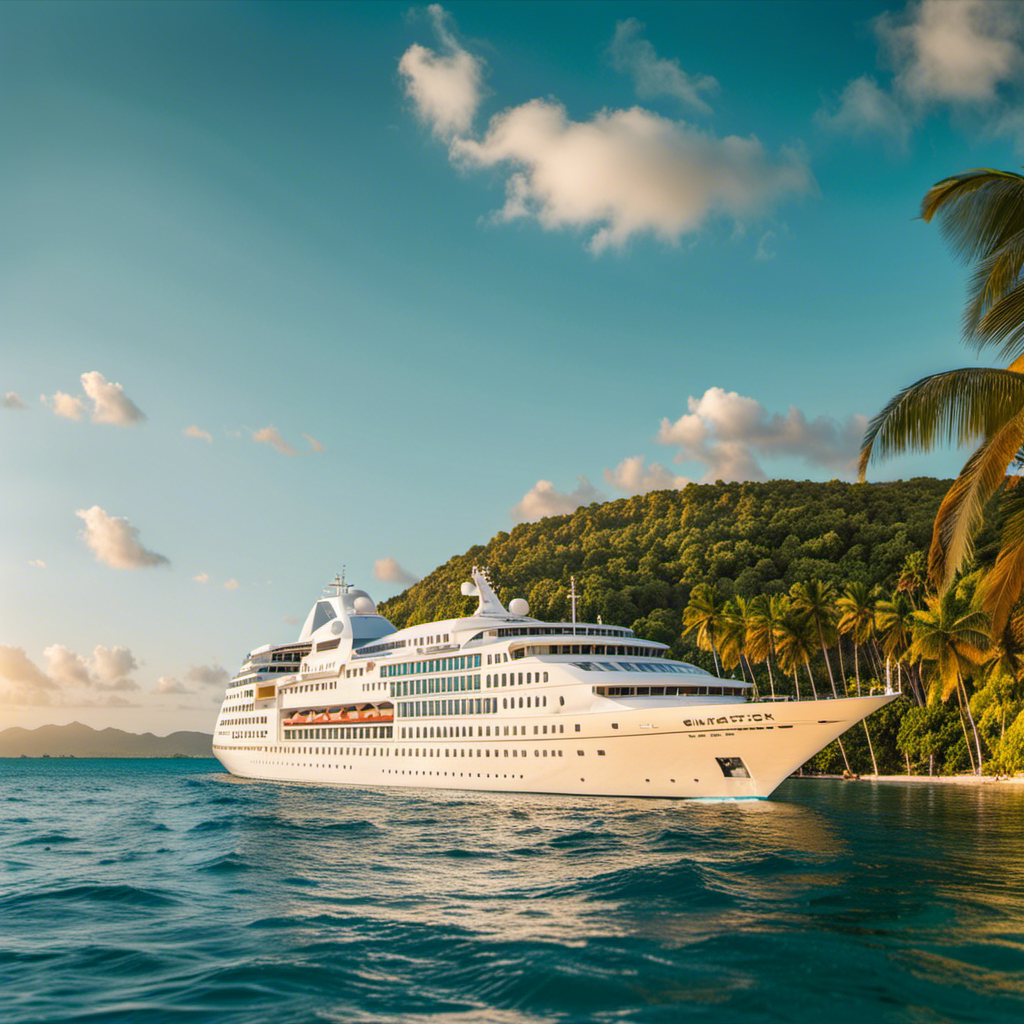As an enthusiast of cruising, the allure of setting sail across the extensive seas has always captivated me. Yet, in light of the ongoing pandemic, the importance of guaranteeing the safety of passengers has become a paramount issue for cruise operators.
As the CDC’s Conditional Sailing Order transitions into a voluntary program, the rules and regulations governing cruise ship operations are evolving. While the CDC has extended the CSO until January 15, 2022, ships sailing from Florida have already embraced a voluntary approach.
However, rest assured that cruise lines are maintaining strict protocols to ensure the well-being of passengers. Let’s delve into how the industry is adapting and prioritizing safety during this transition period.
Key Takeaways
- CDC’s Conditional Sailing Order (CSO) provides guidelines for cruise ships to operate during the pandemic, including testing, passenger screening, and quarantine protocols.
- The CSO has been extended until January 15, 2022, but cruise lines are already voluntarily following CDC rules.
- Cruise lines have implemented strict safety protocols, such as 100% vaccination requirements, testing, and mandatory mask-wearing indoors.
- The Cruise Lines International Association (CLIA) emphasizes health and safety, with cruise lines closely working with the CDC and following science-based measures.
The Importance of Safety in the Cruise Industry
As a cruiser, I appreciate the cruise industry’s commitment to safety and their adherence to science-based measures. Ensuring passenger satisfaction is a top priority for cruise lines, which is why they are constantly implementing new technologies to enhance safety protocols.
From the moment passengers step onboard, they are greeted with advanced screening processes and thorough health checks. Cruise lines have also invested in state-of-the-art ventilation systems and increased sanitation measures to minimize the risk of transmission.
These proactive measures, along with high vaccination rates and testing requirements, have resulted in low rates of serious illness and hospitalization among passengers. The cruise industry understands the importance of maintaining a safe and enjoyable experience for all guests, and they will continue to work closely with the CDC to ensure the implementation of effective safety protocols.
Adapting to the Transitioning CDC Rules
I’m currently adjusting to the changing guidelines set by the CDC. It’s been a challenging transition for the cruise industry, but we are determined to prioritize safety and adapt accordingly.
Here are some key challenges and the industry’s response:
- Uncertainty: The ever-changing guidelines pose challenges in planning and operations.
- Compliance: Adhering to the CDC’s evolving requirements requires constant updates and adjustments.
- Customer confidence: Rebuilding trust and reassuring passengers of their safety is crucial.
- Operational costs: Implementing and maintaining safety protocols can be financially burdensome.
- Staff training: Ensuring that all crew members are well-informed and properly trained on new protocols.
Despite these challenges, the cruise industry has responded proactively. Cruise lines have implemented robust safety measures, including vaccination requirements, testing protocols, and mask mandates. They are committed to working closely with the CDC and are continuously adapting their protocols to ensure a safe and enjoyable cruise experience for passengers.
Cruise Lines’ Commitment to Health and Well-being
Maintaining passenger health and well-being remains a top priority for the cruise industry. Cruise lines have implemented stringent safety protocols and passenger well-being measures to ensure a safe and enjoyable experience onboard. These protocols include high vaccination rates and testing of passengers, as well as the requirement for masks to be worn indoors on cruise ships. The Cruise Lines International Association (CLIA) emphasizes health and safety, and cruise lines follow science-based measures to mitigate the risk of COVID-19 transmission. Serious illness and hospitalization rates among cruise passengers have remained low, indicating the effectiveness of these measures. Cruise lines are committed to working closely with the CDC and will continue to adapt their protocols as needed to prioritize the health and well-being of passengers.
| Cruise Lines’ Safety Protocols | Passenger Well-being Measures |
|---|---|
| High vaccination rates | Testing of passengers |
| Masks required indoors | Science-based measures |
| Low illness rates | Collaboration with CDC |
Protocols and Measures Ensuring Passenger Safety
Implementing stringent safety protocols and passenger well-being measures, cruise lines have successfully maintained a safe and enjoyable experience onboard.
With enhanced protocols and thorough passenger screening, cruise lines prioritize the safety of their guests. These measures include rigorous testing and vaccination requirements, as well as the mandatory use of face masks indoors.
Cruise industry associations, such as the Cruise Lines International Association (CLIA), emphasize health and safety, ensuring that cruise lines follow science-based measures.
The high vaccination rates and testing of passengers have contributed to low rates of serious illness and hospitalization.
Cruise lines are committed to working closely with the Centers for Disease Control and Prevention (CDC) to ensure the continued safety of their passengers.
Despite the transition of CDC rules to a voluntary program, cruise lines will maintain their protocols to safeguard the well-being of all onboard.
The Future of Cruise Industry Safety: Collaboration With the CDC
Collaborating closely with the CDC, cruise industry associations are dedicated to ensuring the ongoing safety of passengers through enhanced protocols and measures.
-
Collaborative efforts: The cruise industry and the CDC are working together to establish guidelines and regulations that prioritize the safety of passengers. This collaborative approach ensures that the industry remains aligned with the latest scientific research and expert advice.
-
Future regulations: As the cruise industry moves forward, future regulations will continue to be developed and implemented to address any potential risks and challenges. These regulations will be based on the evolving understanding of the virus and the best practices for mitigating its spread on cruise ships.
-
Ongoing commitment: Cruise lines are committed to maintaining a high standard of safety for passengers. This commitment includes regular testing, vaccination requirements, enhanced sanitation protocols, and close collaboration with public health authorities. By prioritizing safety and implementing effective measures, the cruise industry aims to provide passengers with a safe and enjoyable travel experience.
Frequently Asked Questions
What Are the Specific Protocols and Measures Currently in Place on Cruise Ships to Ensure Passenger Safety?
Specific protocols and passenger safety measures on cruise ships include mandatory testing, vaccination requirements, passenger screening, mask mandates indoors, and strict adherence to health and safety guidelines. These measures prioritize the well-being of passengers and aim to minimize the risk of COVID-19 transmission.
Are There Any Plans to Relax or Modify the Mask Requirements on Cruise Ships in the Future?
There are currently no plans to relax or modify mask requirements on cruise ships in the future. Cruise lines prioritize safety and will likely continue to enforce mask mandates to ensure passenger well-being.
How Have Cruise Lines Been Enforcing Vaccination Requirements for Passengers?
Cruise lines prioritize passenger safety by enforcing vaccination requirements. Strict protocols are in place, including 100% vaccination and testing by Norwegian Cruise Line. Safety measures, such as masks and testing, will likely continue in the future.
What Steps Are Cruise Lines Taking to Minimize the Risk of COVID-19 Transmission on Board?
Cruise lines prioritize safety by implementing measures to minimize the risk of Covid-19 transmission on board. These include vaccination and testing requirements, mask mandates, and strict protocols. The goal is to ensure a safe and enjoyable cruise experience.
How Will the Transition to a Voluntary Program for the Cdc’s Conditional Sailing Order Impact the Safety Measures Implemented by Cruise Lines?
The transition to a voluntary program for the CDC’s Conditional Sailing Order may impact the safety measures implemented by cruise lines. It remains to be seen how this will impact operations and the cruise line industry’s recovery.










